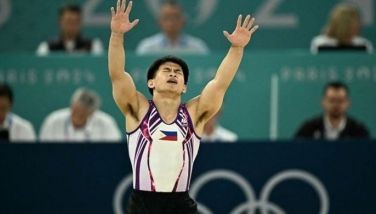Building a sports culture
Since I featured excerpts from the UNESCO (United Nations Educational, Scientific and Cultural Organization)-commissioned book entitled “Innovative Practices in Physical Education and Sports in
Five other authors wrote about PE and sports practices in
The feedback clearly indicated that these sports administrators, managers and plain sports enthusiasts see the logic of a sports culture that cares for a healthy citizenry and Filipino athletes competing on even terms with the rest of the world. They see the need to give equal importance to grassroots and elite sports and, more important acknowledge the potent role sports can play in human development and peace. They agree that a common mistake committed even by so-called sports leaders is that, as stated by Leonard de Vries in his chapter “Overview of Recent Innovative Practices in PE and Sports in Asia,” PE and sports are considered as “play” rather than subjects that develop the ”thinking” capacity.
Such a perception is just but one of the reasons why there has been very little progress in PE and sports in many parts of
De Vries, adds that important decisions on PE and sports are often made by government officials, with no academic or professional qualifications in the discipline.
Be that as it may,
Another emerging pattern is the attempt to transmit more knowledge-based lessons to students as compared with past practices that consisted mainly of practical exercises, with learning through doing or moving. This emerging pattern has been spurred by the active living concept which has been in turn triggered by changing lifestyles.
De Vries also states that some efforts are being made to implement local Asian indigenous activities, especially Asian martial arts and physical health into the PE curriculum. The present paradigm involves teaching European, American and Olympic sports extensively in Asian schools even as calls are being made for Asian physical activities and games to be included in the curriculum. “Asianizing” the curriculum will undoubtedly help students identify with their own cultures and strengthen the development of a healthy image and self-confidence.
A special concern is PE for girls. As stated by De Vries, in Islamic countries, girls are expected to follow certain rules and regulations. Studies have been conducted to develop strategies that enable Muslim girls to participate in PE and sports within the prescribed boundaries. The International Council for Health, Physical Education, Recreation, Sports and Dance Asia Region (ICHPERSD Asia) has formulated certain guidelines, among which are the following: PE curriculum–the Ministry of Education and Ministerial Developments (in Malaysia) should coordinate policy – and decision-making to ensure equitable opportunities and learning experiences for all, including girls with disabilities. The curriculum should accommodate the values, attitudes and aspirations of the girls.
- Latest
- Trending



























